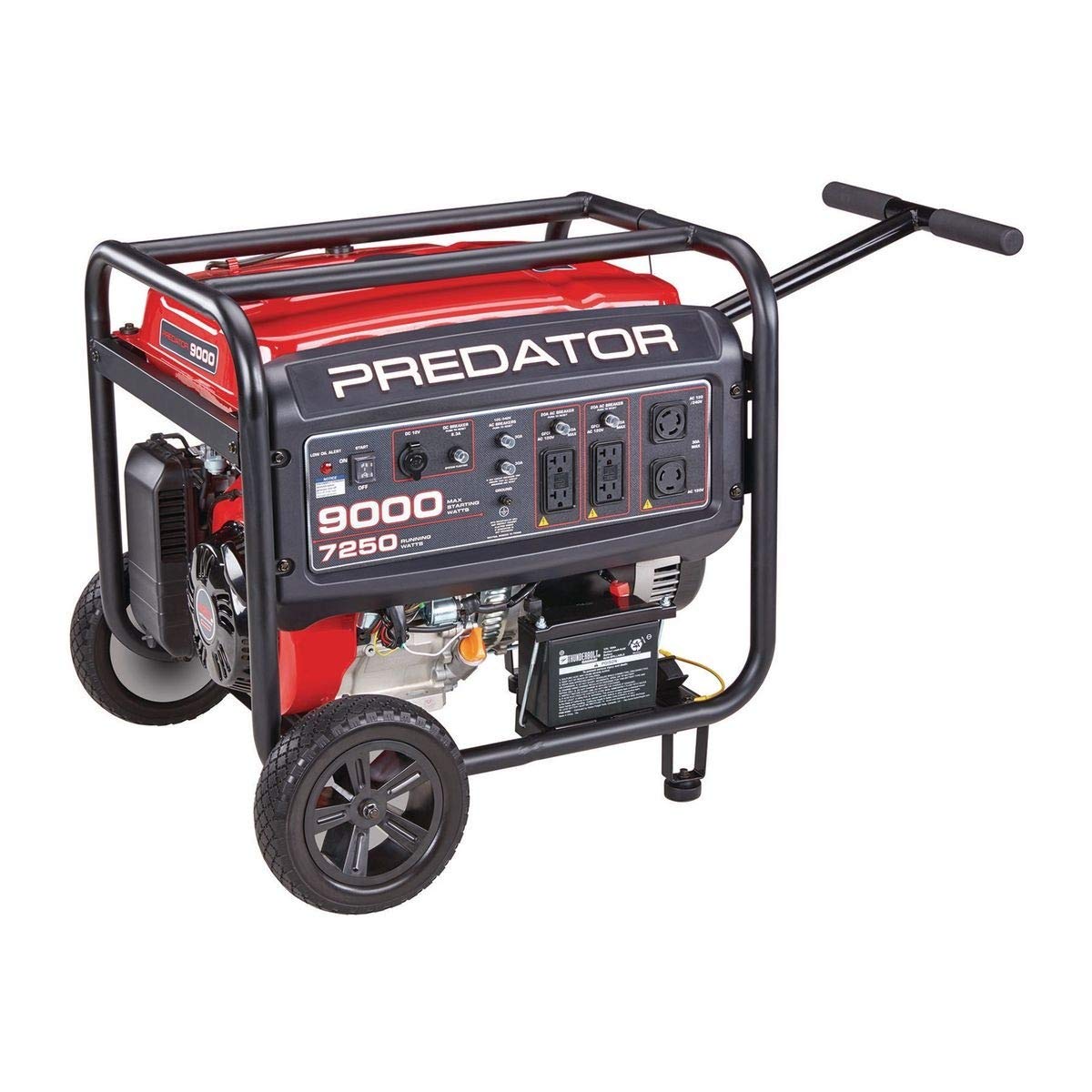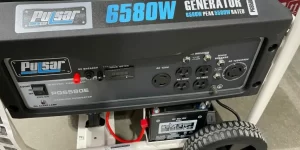Where Most Predator Generators Lose Gas and How to Fix
You have detected the odor of gas or seen a tiny puddle beneath your generator, but you cannot locate the source of the leak. I have included the most typical gas leak entry points for a generator.
A damaged carburetor bowl gasket, blocked float, fuel filter, fuel line, fuel tank, or fuel shut-off valve may all cause gas to leak from the carburetor of a Predator generator.
Use only a well-ventilated space for your job. Before attempting to diagnose or repair the generator, let it cool down.

Table of Contents
This is where the gas leak from the Predator generator might start.
1. Your Predator’s Power Plant’s Carburetor
A leak in your Predator generator often occurs near the carburetor. After leaving the fuel tank, some gasoline is temporarily kept here.
When gas sits in the carburetor for a long time, it produces varnish, which may cause the tiny moving components to stick and render the carburetor unable to control the flow of fuel. Because of this, it may begin to overflow.
The carburetor bowl gasket might break down and produce a leak in addition to internal parts breaking down.
Carburetor bowl gasket failure on the Predator generator.
If you suspect a leak in your carburetor, start by inspecting the connection between the bowl and the bottom of the device.
Over time, the gasket between the bowl and the carburetor might harden and crack. The gasket becomes hot while the engine is running and cold when it is turned off because of their close proximity.
The gasket’s sealing capacity deteriorated as a result of the repeated stress of heating and chilling. A replacement carburetor bowl gasket should be purchased and installed if a leak is discovered here.
The bowl gasket of a Predator carburetor must be replaced.
- Use the fuel shut-off valve to stop the fuel flow. If your generator doesn’t have a fuel valve, you may crimp the fuel line with a pair of pinch pliers to halt the flow.
- Before removing the bowl, make sure the carburetor’s exterior is clean so that debris doesn’t get sucked into the engine.
- Keep a towel or other small receptacle handy to wipe out the bowl and save any residual gasoline.
- There may be a screw on the side of the gasoline bowl that may be used to empty the carburetor. If yours does, unscrew the fuel drain plug, pour the petrol into a container, then reinstall the fuel drain plug. If not, then go on to the next section.
- Take off the bowl of the carburetor by unscrewing it.
- It’s time to get rid of the old gasket and install the new one.
- Put the carburetor bowl back in place.
- Put the screw back in the bowl’s carburetor.
- If there was any gasoline spillage, clean the carburetor once more.
- Start the engine with the fuel pump running to make sure the carburetor isn’t leaking any more.
In the Predator’s generator carburetor, the float is stuck.
If you can’t locate the problem in the bowl, try checking for fuel seepage close to the air intake port. If gasoline is leaking here, it’s likely because the float in the carburetor has become stuck and is no longer controlling the amount of fuel entering the bowl.
When the float in your carburetor becomes stuck, fuel continues pouring into the bowl and eventually spills out.
When you discover a stuck float, you need to disassemble your carburetor to find out why. The float may not stick if you maintain the carburetor clean.
The carburetor may need to be rebuilt or replaced before it can function properly again.
Predator generator carburetor float needle has been jammed.
The float needle in your carburetor should be the final item you inspect. The float needle cooperates with the float to maintain fuel flow to the bowl of the carburetor. Needle repairs may be necessary if the needle becomes jammed.
You may either disassemble your carburetor and replace the float yourself, or take it to a small engine specialist.
2. Your Predator’s Cracked or Soggy Fuel Filter
A plastic inline fuel filter installed in the fuel lines runs the risk of developing leaks. When the filter isn’t replaced often, the plastic housing deteriorates, which is a major issue.
Leaks in the filter housing might be caused by old gasoline lingering in there. If your filter has a leak because of a crack or because it is made of flimsy plastic, you should get a new one.
Inline fuel filters are not used in any Predator generator. Some people use a filter at the very bottom of the gas tank, while others use a tiny, inconspicuous filter in a hidden part of the gas system.
3. Your Predator Generator’s Gas Tank Has Emptied
The fuel tank on your Predator generator might be made of metal or HDPE. Both types are equally susceptible to leaking as they become older.
The polyethylene tank may spring a leak if its seams give way. Leaving fuel in a metal tank may produce corrosion and rust patches, which can lead to a hole.
When a gasoline tank leak is discovered, a replacement tank should be installed immediately.
However, this may not be a possibility for those who own models with metal tanks that are no longer in production. You may try patching up the damage.
4. Broken Predator Generator Safety Switch
Make that the Predator generator’s fuel shut-off valve is open. It might be the source of the leak in your generator. If you notice a leak in a shutoff valve, you should repair it immediately.
There might be a sediment bowl and seal on the fuel shutoff valve. If water is leaking around the bowl, you should remove it, clean it, and reseal it. In such case, you need replace the whole valve.
If a faulty gasoline shut-off valve keeps leaking, you should replace it.
5. Connecting the Predator Generator’s Fuel Lines
Over time, fuel lines may dry up and fracture. Cracks in the gasoline lines need the installation of brand new lines. Lines should be replaced before they start leaking due to dryness and aging.
Check for gasoline seepage and ensure sure the fuel line is firmly attached to the fuel components in addition to checking the age and condition of the lines. To ensure a tight fit, you may need to replace the clamps.







